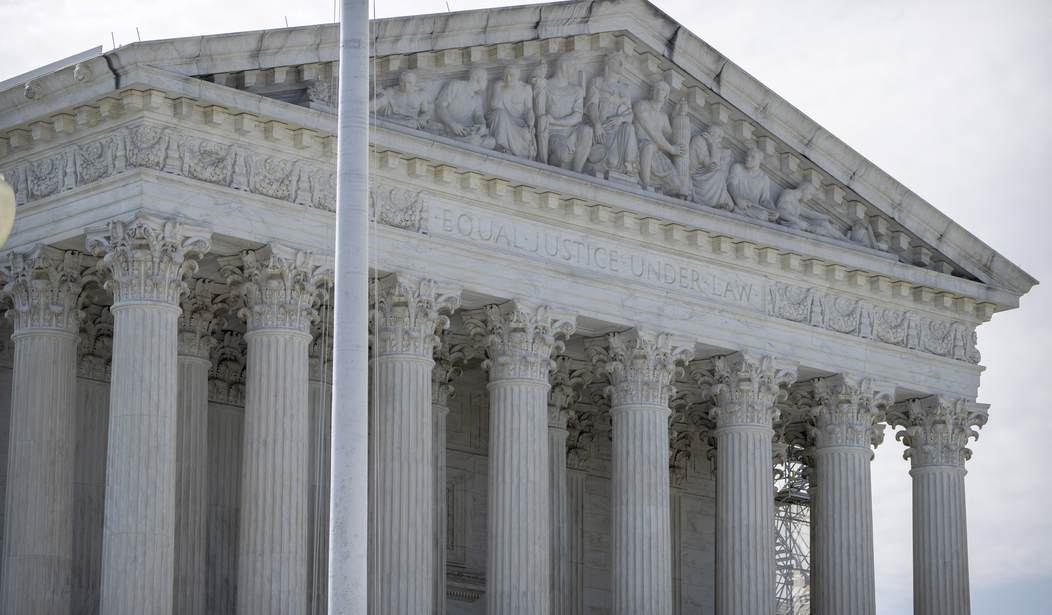After the Supreme Court overturned the Fifth Circuit's decision in Rahimi, ruling that laws prohibiting those subject to a domestic violence restraining order from lawfully possessing firearms isn't a violation of the Second Amendment, the justice sent the case back down to the appellate court for new hearing.
Now the Fifth Circuit has affirmed Zackey Rahimi's conviction, but not without Judge James C. Ho throwing some shade SCOTUS's way.
In a concurring opinion, Ho said the Fifth Circuit was simply (and properly) applying the Court's "text, history, and tradition" test when it determined that there were no historical analogues sufficient to uphold the modern-day prohibition in question. Instead, he says the Court revised the Bruen test on its own in order to uphold Rahimi's conviction, and as a result, some victims of domestic violence are now at risk of incarceration.
In the past, the Court has held unconstitutional laws that punish people who don’t belong in federal prison—even if the defendant himself does. That principle readily applies here—victims of domestic violence don’t belong in prison.
Violent criminals should be disarmed, detained, prosecuted,convicted, and incarcerated. No doubt that’s what Congress had in mind when it enacted 18 U.S.C.§ 922(g)(8). But § 922(g)(8) also punishes victims of domestic violence. As a number of amici have explained, § 922(g)(8) punishes victims who don’t present any danger to anyone, but who are nevertheless subject to a protective order. It should go without saying that domestic violence victims shouldn’t be imprisoned for exercising their Second Amendment rights.
The National Association of Criminal Defense Lawyers and the Bronx Defenders Union, for example, noted that “the Government tries to assure this Court that states are foolproof in issuing orders of protection,” but that “[t]his could not be further from the truth.” “In our experience, the net of orders of protection is so big that it frequently entangles . . . the actual victims in the relationships.” “The Government does not address the reality that states frequently get it wrong”—namely, by “arresting the wrong partner.”
Ho suggests that the Supreme Court should have done more than "acknowledge the 'potential faults with § 922(g)(8)" when deciding Rahimi, but the justices instead concluded "that any defects must be addressed in a future proceeding".
While Ho wrote a separate concurrence pointing out one of the major flaws with the Court's decision in Rahimi, the entire panel also took pains to note that SCOTUS revised its "text, history, and tradition" test to uphold Rahimi's conviction. In a footnote to the per curium opinion, the three judges say they "read the Court’s analysis in Rahimi to have modified Bruen in at least one relevant respect."
In Bruen, the Court instructed that surety laws provided no historical analogue for banning a person from having a gun, because surety laws only required “certain individuals to post bond before carrying weapons in public.” 597 U.S. at 55.“These laws were not bans on public carry.” Id.; see also id. at 59 (same). So any “reliance on [surety laws] [was] misplaced.” Id. at 55. In Rahimi, the Court announced that surety laws “confirm” that covered individuals “may be disarmed.” 602 U.S. at ----, 144 S. Ct.at 1901.
SCOTUS didn't only use 19th-century surety laws to decide that Zachey Rahimi could be prohibited from possessing a gun while subject to a domestic violence restraining order. They paired those laws with other statutes prohibiting "affrays" or fighting in public. Taken together, the Court concluded that "when an individual poses a clear threat of physical violence to another, the threatening individual may be disarmed."
Section 922(g)(8) is not identical to these founding-era regimes, but it does not need to be. Like the surety and going armed laws, Section922(g)(8)(C)(i) applies to individuals found by a court to threaten the physical safety of another. This prohibition is “relevantly similar” to those founding era regimes in both why and how it burdens the Second Amendment right. Section 922(g)(8) restricts gun use to check demonstrated threats of physical violence, just as the surety and going armed laws do. Unlike the regulation struck down in Bruen, Section 922(g)(8) does not broadly restrict arms use by the public generally.
The problem, as Ho alluded to in his concurring opinion, is that the "surety" laws didn't actually prevent anyone from possessing a firearm. If they were believed to pose a danger to the public, they had to pay a bond before they could carry, but they still were able to legally bear arms and exercise their Second Amendment rights.
The majority in Rahimi essentially held that the surety laws were an appropriate analogue when dealing with individuals who've been found by a court to pose a danger to others, but they're not applicable to laws subjecting every lawful gun owner to a discretionary "may issue" licensing regime. Is that a revision of the Bruen test, or is it a matter of the Court fleshing out the contours of the "text, history, and tradition" standard?
Intrepreted narrowly, the Supreme Court's ruling in Rahimi doesn't upend or truly conflict with Bruen. The problem is that some lower courts aren't looking at Rahimi narrowly. Instead, they're using the decision to uphold modern gun control laws by citing just a couple of historical laws that bear little resemblance to the prohibition in question. The most recent example of this was the Ninth Circuit's decision upholding many "sensitive places" restrictions in California and Hawaii, where the panel concluded that "a small number of laws, even localized laws, can suffice" to prove a national tradition, so long as the judges believe those earlier laws were "uncontroversial".
The confusion (and outright defiance) of Bruen is all the more reason for the Court to accept at least one Second Amendment case in the fall term. Justices are set to consider granting cert to the lawsuit challenging Maryland's ban on so-called assault weapons and "large capacity" magazines later this fall, but they also have the opportunity to hear a case involving a Hawaii man arrested and charged for carrying a firearm without a permit at a time when the state wasn't really issuing concealed carry licenses. Either case would give the Court the opportunity to elaborate on the "text, history, and tradition" test, but in my opinion the Maryland gun ban challenge is the better vehicle, since it would also allow SCOTUS to state once and for all that semi-automatic firearms are not "weapons of war" that fall outside of the Second Amendment's protection.









